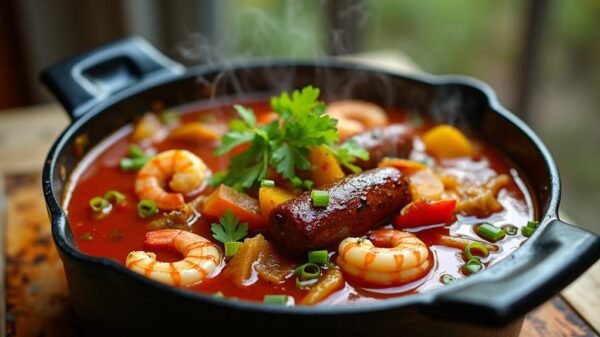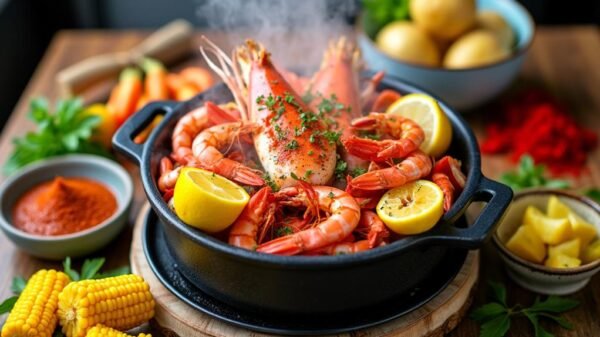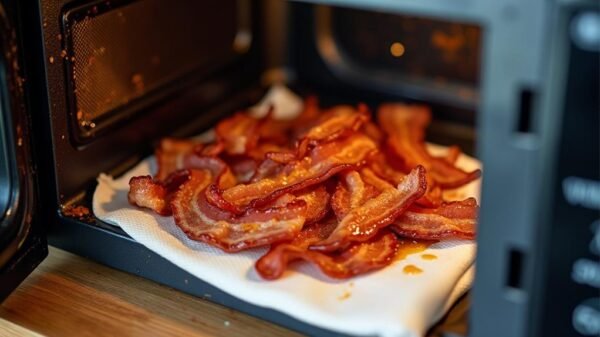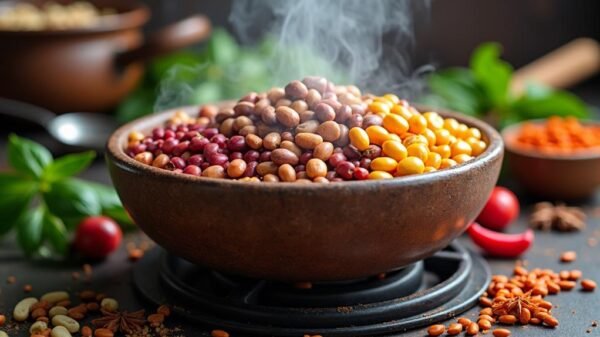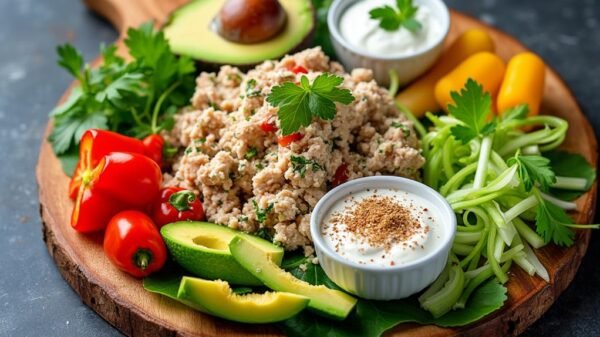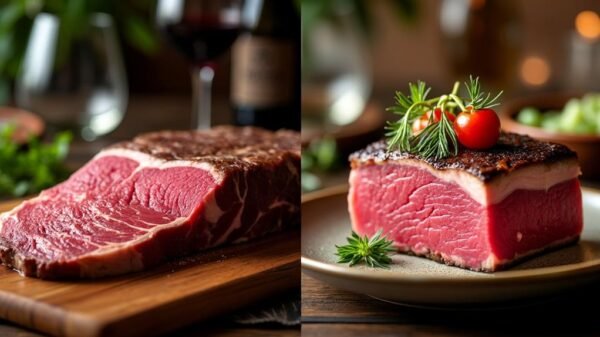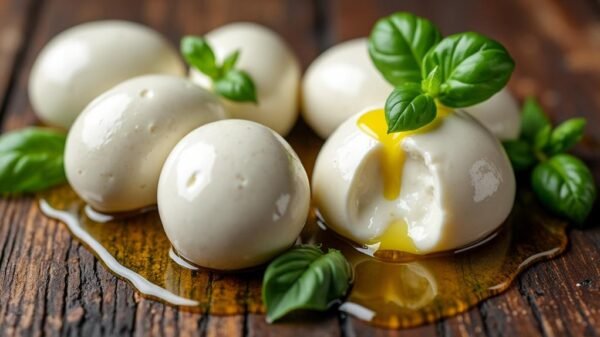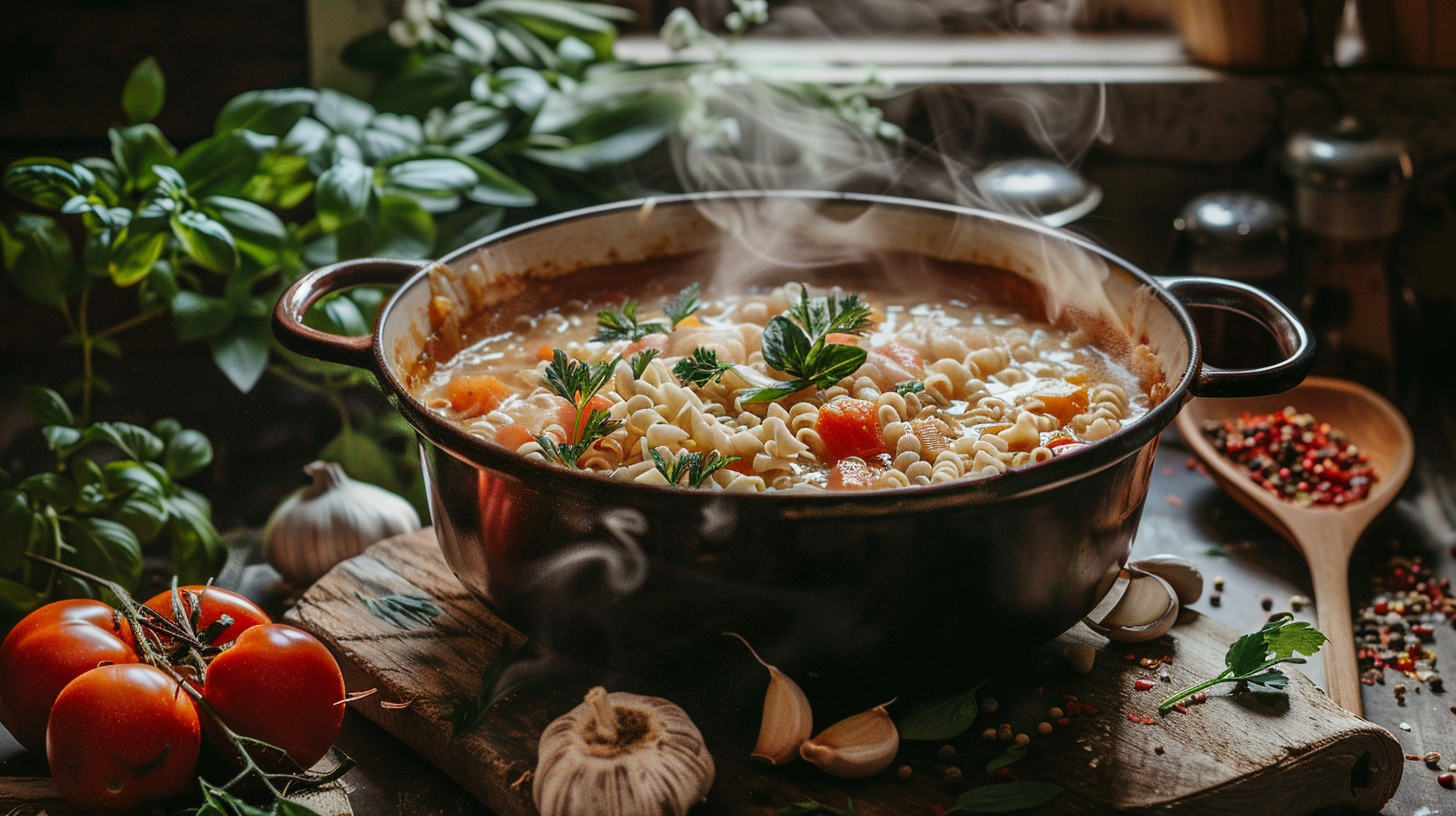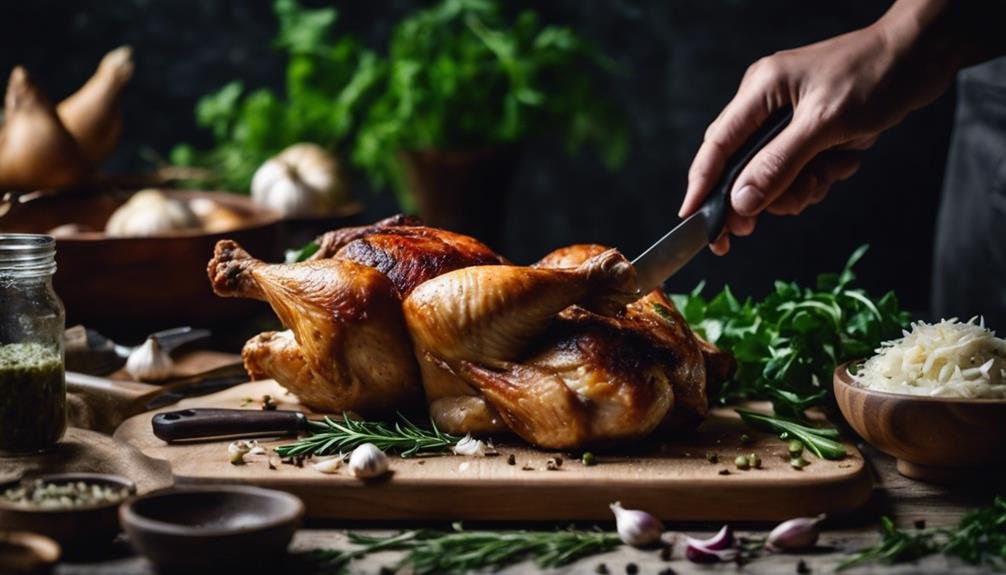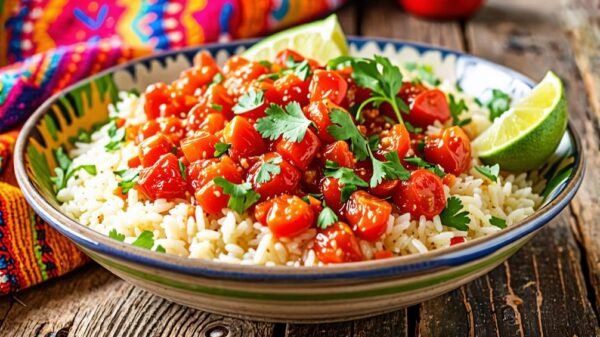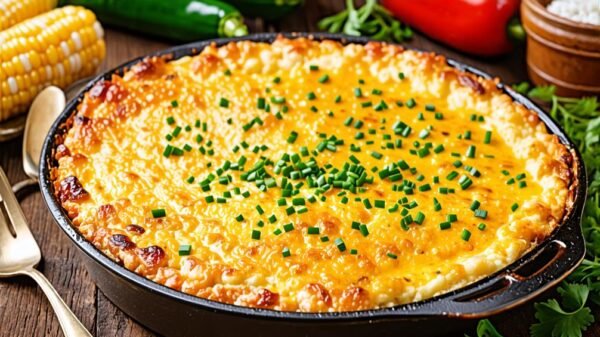The choice of thick noodles can greatly improve the result of slow-cooked pasta dishes, offering both structural integrity and a sturdy canvas for flavor absorption. These noodles not only endure extended cooking times but also contribute to a heartier texture that enhances the complete dining experience. As one delves into the nuances of timing and variety, the process of attaining the perfect consistency becomes crucial. However, the art of perfecting this balance does not end here; grasping the complexities of flavor infusion and ideal pasta varieties remains vital for culinary excellence.
Benefits of Thick Noodles
Thick noodles, such as fettuccine and penne, are ideal for slow-cooked pasta dishes. They retain their texture and absorb flavors well. This sturdiness prevents them from becoming mushy, unlike thinner noodles.
As they soak up rich tomato or creamy Alfredo sauce, thick noodles elevate the dining experience. They create a delightful balance of flavor and heartiness.
Chefs and home cooks can explore various cooking techniques with these versatile pasta shapes. In the kitchen, thick noodles celebrate the art of slow cooking.
Tips for Perfect Consistency
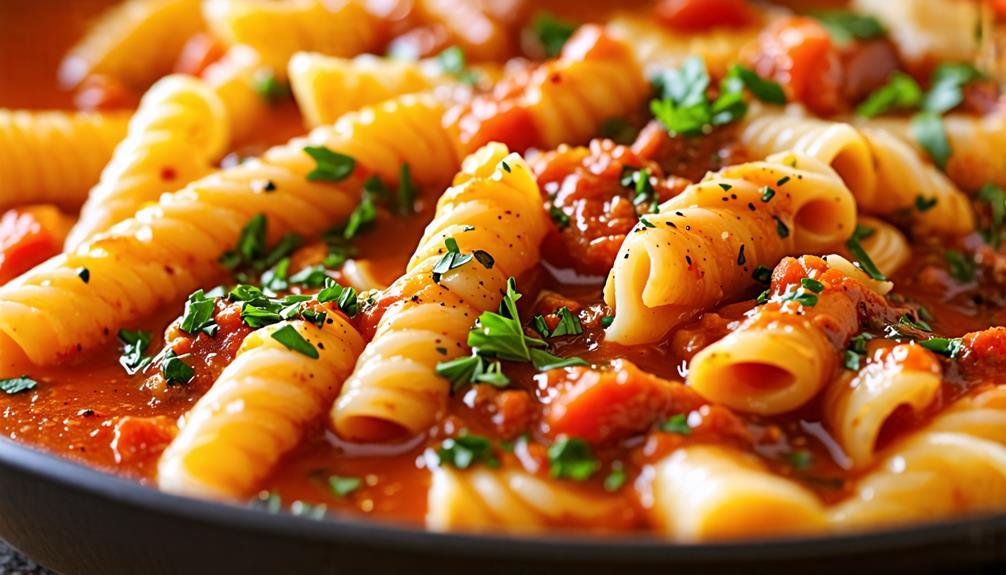
Achieving perfect consistency in slow-cooked pasta dishes demands precise timing and effective cooking techniques. The key to attaining that ideal al dente bite lies in the careful selection and handling of noodles.
When using thicker varieties, such as fettuccine or pappardelle, add them towards the end of the cooking time to allow their hearty texture to develop fully. During the cooking process, regularly checking for doneness can guide you, ensuring each piece retains its shape and flavor.
Embrace the opportunity to experiment in the kitchen, as brands like Barilla and De Cecco offer a range of pasta types that can accommodate your culinary adventures. With patience and attention, this cooking journey can transform into a delightful experience, bursting with rich flavors and satisfying textures.
Timing for Slow-Cooked Pasta
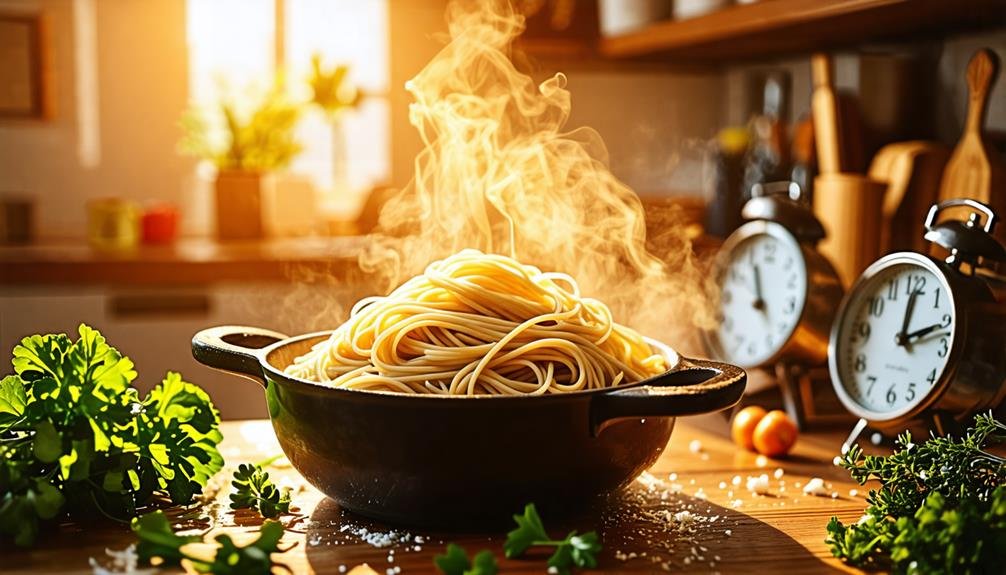
Timing is essential when preparing slow-cooked pasta. The right moment to add the noodles can significantly affect the dish's texture and flavor. For thicker varieties like Barilla fettuccine or De Cecco penne, introduce them later in the cooking process. This timing ensures optimal tenderness.
Picture this: your marinara sauce simmers, aromatic and inviting, while you hold back the pasta, waiting for that perfect moment. A gentle stir, a brief pause, and then the noodles join the mix, soaking up all that delicious flavor.
This careful timing elevates your dish from good to extraordinary. It's a harmonious blend of patience and precision, crafting a meal that warms both the stomach and the heart.
Enhancing Flavor Infusion
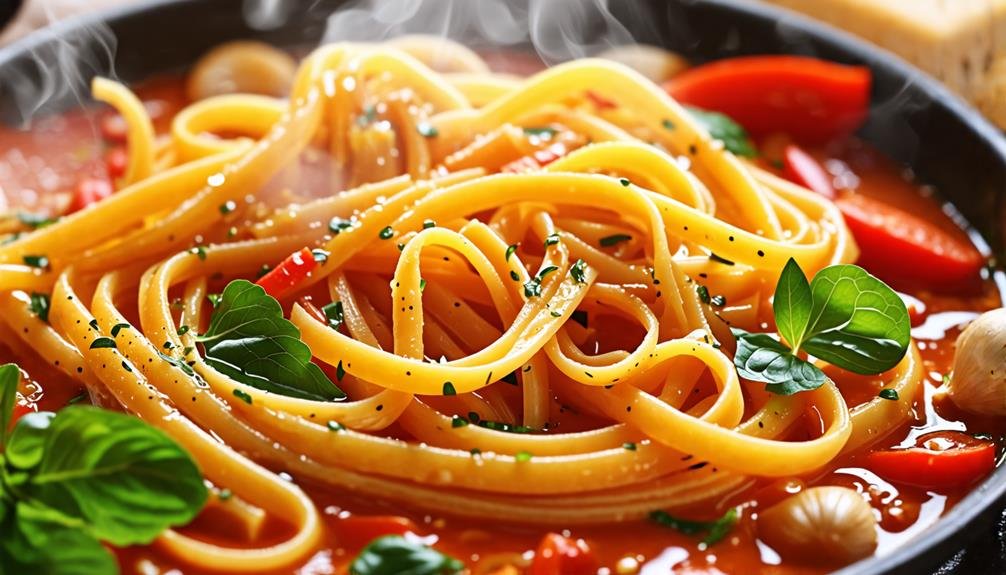
Slow-cooking enhances flavor infusion in pasta dishes significantly. This technique allows simple components to meld into a rich and cohesive dish, where time becomes an essential ingredient. The prolonged cooking process permits the ingredients to interact, creating a memorable meal.
For optimal flavor enhancement, explore these combinations:
- Herbs: Fresh basil and thyme elevate taste profiles.
- Proteins: Hearty options like beef or Italian sausage deepen the sauce, ensuring each pasta piece absorbs the robust flavors.
- Dairy: Adding melted Parmigiano-Reggiano introduces a creamy texture and richness.
Thicker pasta varieties, such as pappardelle or rigatoni, are particularly suited for this method, as they absorb the savory essence of the broth.
In the end, slow-cooked pasta transcends ordinary dining; it transforms into an indulgent experience, inviting you to savor each delectable bite.
Ideal Pasta Varieties
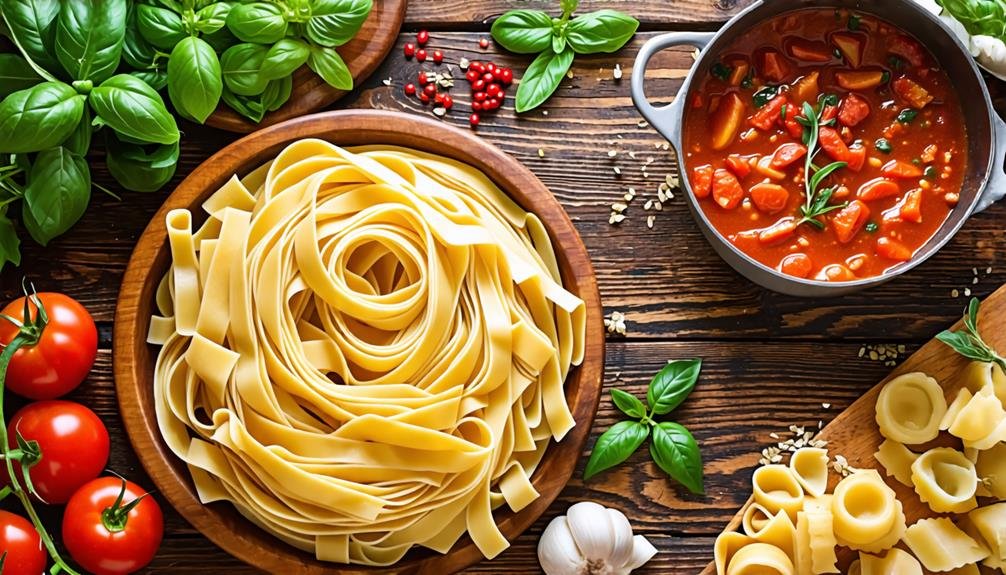
Thicker pasta varieties such as fettuccine, penne, farfalle, and tortellini are ideal for slow-cooked dishes. These shapes enhance texture and flavor absorption.
Stuffed tortellini, for example, introduces delightful fillings, transforming a simple meal into a memorable experience. Their robust nature allows them to embrace rich sauces, capturing flavors that tantalize the taste buds.
In the culinary world, these pasta types serve as a foundation for creativity, offering not just nourishment but a platform for culinary artistry. Explore the potential and let your dishes shine with these exceptional pasta selections.



